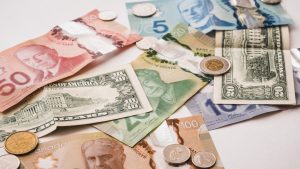Forex trading is a popular way to invest in the global financial market. In forex trading, traders buy and sell currency pairs with the intention of making profits from the differences in exchange rates. One important aspect of forex trading is the rollover rate, which is a fee that is charged or paid to traders for holding positions overnight. In this article, we will explain how rollover rates work in forex trading.
What is a rollover rate?
A rollover rate, also known as a swap rate, is the interest rate that is charged or paid to traders for holding a position overnight. In forex trading, currencies are traded in pairs, and each currency has its own interest rate. When a trader buys a currency with a higher interest rate than the currency they are selling, they earn interest on the position. Conversely, when a trader buys a currency with a lower interest rate than the currency they are selling, they pay interest on the position.
A rollover rate is calculated based on the difference between the interest rates of the two currencies in a currency pair, the size of the position, and the length of time the position is held. Rollover rates are usually displayed as an annual percentage rate (APR), but they are applied on a daily basis.
How are rollover rates calculated?
The calculation of rollover rates is based on the interest rate differential between the two currencies in the currency pair. The interest rate differential is the difference between the interest rate of the base currency and the interest rate of the quote currency. The interest rate of the base currency is the interest rate of the country that issues the currency, while the interest rate of the quote currency is the interest rate of the country that the currency is being traded against.
For example, if the interest rate of the US dollar is 2% and the interest rate of the Euro is 1%, the interest rate differential between the two currencies is 1%. If a trader holds a long position in the EUR/USD currency pair, they will pay interest on the position because the interest rate of the Euro is lower than the interest rate of the US dollar. Conversely, if a trader holds a short position in the EUR/USD currency pair, they will earn interest on the position because the interest rate of the US dollar is higher than the interest rate of the Euro.
The size of the position and the length of time the position is held also affect the rollover rate. The larger the position and the longer the position is held, the higher the rollover rate will be.
How are rollover rates charged or paid?
Rollover rates are charged or paid at the end of each trading day, which is typically at 5 pm EST. If a trader holds a long position in a currency pair with a higher interest rate than the quote currency, they will earn interest on the position. The interest earned will be added to the trader’s account. If a trader holds a short position in a currency pair with a lower interest rate than the quote currency, they will pay interest on the position. The interest paid will be deducted from the trader’s account.
Rollover rates can also be affected by market conditions, such as central bank interest rate decisions or economic data releases. In times of high volatility, rollover rates can be higher than usual.
Conclusion
Rollover rates are an important aspect of forex trading, as they can affect the profitability of a trade. Understanding how rollover rates are calculated and charged or paid is essential for traders to make informed decisions about their positions. Traders should also consider the impact of market conditions on rollover rates when making trading decisions.





